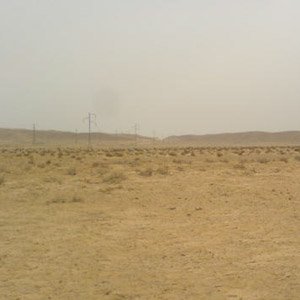Magazine | Voyages
Observer les oiseaux dans le nord-ouest du Néguev (Israël)

Paysage dans l’ouest du Néguev (Israël).Photographie : Ornithomedia.com
Introduction
Le Nord-ouest du Negev en Israël est l’un des meilleurs secteurs ornithologiques hivernaux du pays, et l’un des plus fameux secteurs du Paléarctique occidental à cette saison pour l’observation de rapaces rares comme l’Aigle impérial ou le Faucon sacre. Cette zone est facile d’accès, en venant du Nord (depuis Ashkelon en passant par la Siad Junction), de l’Est (depuis Beersheba en passant par Ofaqim) ou du Sud (depuis Telalim en passant par Revivim).
Le secteur est constitué de grands champs où se nourrissent des troupes de Grues cendrées, de vanneaux et de gangas, et de zones steppiques ou semi-désertiques où nichent des espèces remarquables comme le Courvite isabelle (Cursorius cursorius) et l’Outarde de McQueen (Chlamydotis macqueeni).
Dans cet article, nous vous présentons plusieurs bons sites d’observation.
Abstract
Israel lies on the border between two climatic realms, the subtropical Mediterranean, and the arid belt of deserts extending across North Africa and South-west Asia. The desert makes up most of Israel’s area and consists of three geographical units : the Northern Negev, the Central Mountain Range and the Rift Valley. Within the first unit, the North Western Negev is one of the most exciting winter birdwatching area in the Negev, and, indeed, in Israel. The area can be reached from the north (from the direction of ashkelon via Saad junction), from the east (from Beer Sheva via Ofaqim), or from the south (from Telalim junction via Revivim).
The landscape in this area includes vast cultivated areas and large areas of transitionnal habitat, from natural steppe to semi-desert. This is the place to see both wintering and desert species. Here can one observe the rare Saker falcon, Lanner falcon, Imperial Eagle as well as Sociable Plover and thousands of Pin-tailed Sandgrouse wintering here. The sandy areas excellent places for finding some much sought after desert species, Cream-coloured Courser (Cursorius cursor), McQueen’s Bustard (Chlamydotis mcqueeni) and Sandgrouses amongst others.
In this article, we present you several good birding spots.
Poursuivez la lecture de cet article, en vous abonnant dès maintenant !
Découvrez les Archives d’Ornithomedia.com
Pour seulement 10,00 €TTC/an (ou 6,00 € les 6 mois)
Profitez de plusieurs centaines d’articles en accès illimité et sans aucun engagement.
Compléments
À lire aussi sur Ornithomedia.com
- Actualités ornithologiques israéliennes de mars 2013
- Israël : actualités ornithologiques de décembre 2010
- Les dix oiseaux vedettes de l’Eilat Spring Migration Festival 2010
- Le nord-est d’Israël : marais, plateaux et festival
- Rencontre avec le Petit-Duc de Bruce en Israël
- Hula Bird Festival 2012 : grues, aigles et compagnie
À lire sur le web
- Le site web de la SPNI : www.birds.org.il
- La page Facebook de l’I.O.C. : www.facebook.com/pages/Israel-IOC-Birds-and-Birding
- Les sites web de l’Israel Ornithological Center (I.O.C.) : www.birds.org.il / www.israbirdcenter.org
- Le blog de Yoav Perlman : nubijar.blogspot.com
- Le blog Eilat Birding blog : http://eilatbirding.blogspot.co.il
- Le blog du Ramat HaNegev Birding Center : http://ramathanegevbirdingcentre.blogspot.fr/
- Le site web de l’International Birdwatching Center : www.birdwatching.org.il
Ouvrages recommandés
- Le guide Ornitho de L. Svensson et al
- Birds of the Middle East de Richard Porter (Auteur) et Simon Aspinall (Auteur)




Aucun commentaire sur ce sujet
Participer à la discussion !